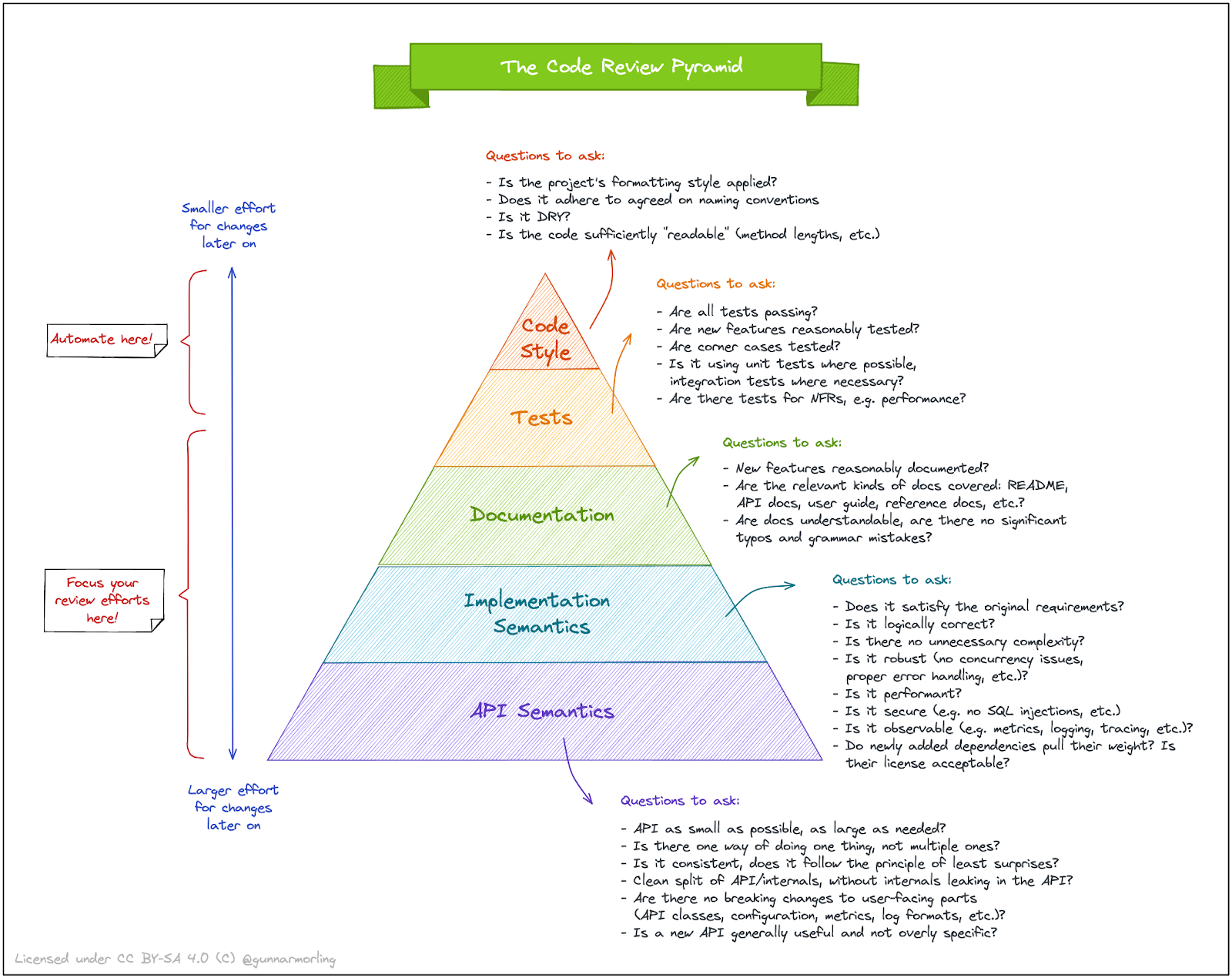Reducing Technical Debt: Best Practices for Future-proofing Your Projects
Published on Nov 29, 2023
Technical debt is no new problem in software development. The causes may vary, but its negative consequences stay obvious if you let the debt accumulate over time.
In this second part of the Technical Debt series, let's discover how technical debt builds up, and the best ways to reduce it.
How technical debt accumulates over time
Technical debt accumulates in every business, just in different ways. Remember, not all technical debt is bad. Just like you sometimes need to borrow money to finance a business expansion, it is okay to take on a manageable amount of tech debt to grow or accelerate your business.

To better manage trade-offs, engineering organizations must understand how technical debt accumulates. Here are a few common reasons it starts to grow:
Deadline pressure
Tight project schedules or urgent demands may force developers to take shortcuts to meet delivery deadlines, leading to less-than-ideal solutions.
Lack of experience
Inexperienced software developers might inadvertently write code that isn’t efficient or maintainable.
Changing scope
If requirements shift during development, previously well-designed code might become obsolete or incompatible.
Temporary solutions
Sometimes, developers implement quick fixes or short-term solutions to address immediate issues, intending to revisit them later (which often never happens).
Ignoring code quality
Failure to adhere to coding standards and best practices can lead to bad code debt that is difficult to read, understand, and maintain.
Outdated technologies
Using obsolete or deprecated technologies can create technical debt as they become harder to maintain and integrate with newer solutions.
Inadequate testing
Only complete or sufficient testing may cause undetected bugs or vulnerabilities, leading to future complications.
The importance of reducing technical debt
Reducing technical debt on time is crucial since accumulated code debt poses a danger not only to the product but also to the entire business.
When technical debt is not correctly handled, it can result in both financial and technical concerns, such as:
- increased expenses
- lower productivity
- security-related issues
- decreased product quality
- decreased user experience
Why you should not aim for zero technical debt
As previously said, every business develops some sort of tech debt. Attempting to erase all technical debt is unrealistic for the following reasons:
- Reducing technical debt requires an investment of time and resources, which may result in severe delays and make timely delivery impossible
- Development teams must prioritize delivering business value. If project requirements change, they must follow suit
- Not all technical debt carries the same level of risk; so trying to eliminate a low-impact technical debt may be a waste of time and resources
- Time allocated solely to eliminating technical debt may take away from other important activities, such as developing new features or addressing critical bugs
Best practices to reduce technical debt
While technical debt is unavoidable (and even necessary) in certain situations, effective debt-reducing measures are crucial to prevent it from hurting the long-term software development process.
Here are some strategies you can use to manage and reduce tech debt:
Acknowledge your debt
It often happens that companies acquire technical debt without realizing it. However, there is a tipping point when the technical debt is no longer a “blessing” but a “curse”. The earlier you acknowledge it, the easier it is for you to reduce it.

Measure your debt
This can help set realistic debt reduction goals and track progress over time. Here are a few ways to measure technical debt:
- Code metrics: such as code duplication and cyclomatic complexity; the higher these values, the higher the debt
- Defect density: the number of known defects divided by the size of the number of lines of code; a high defect density often signals a high amount of technical debt.
- Code churn: refers to the frequency with which code is modified. A high rate of code churn suggests that the software carries technical debt.
- Time-to-market: as technical debt accumulates, new features take longer to implement as developers must navigate and manage a more complex codebase.
Document your debt
- Update your project documentation regularly
Without up-to-date documentation, developers risk creating solutions that aren’t fully aligned with the project requirements, which eventually leads to technical debt. Similarly, when product requirements change and technical debt is discovered, the documentation should be updated as soon as possible.
It is best to start the documentation even before the development begins.
- Maintain the debt list as part of a Scrum product backlog
Treat each debt as a user story, and the estimated effort and schedule to pay off each debt is estimated the same way other stories are estimated in Scrum.
- Identify risks and dependencies early on
Once you have identified the dependencies and risks, you need to align the project schedules and milestones with the dependent teams or stakeholders to avoid delays or conflicts. Additionally, it is important to define clear roles and responsibilities for managing the dependencies and risks, and communicate them to all the involved parties. Lastly, allocate sufficient time, resources, and contingency buffers to handle the dependencies and risks.
Ensure code quality and cleanliness
- Establish a clear Definition of Done and coding standards
With a clear and standardized Definition of Done, the team will be on the same page and complete all that needs to be done for a project to be delivered. By defining and following coding standards, you can avoid technical debt caused by messy, confusing, or inconsistent code. No steps skipped and no corners cut, the quality delivered will stay high and consistent with every sprint.
- Take code reviews and pair programming serious
When pairing in programming, developers review each other's code for quality. However, it is important for the code reviewer to not just play the role of someone checking quality, but as someone who elevates the overall quality standards.

Refactor code regularly Refactoring can help eliminate technical debt by removing redundant, obsolete, or duplicated code, simplifying complex or convoluted logic, enhancing modularity and reusability, and fixing bugs or vulnerabilities. Refactoring code regularly can also make it easier to adapt to changing requirements, add new features, or integrate with other systems.
Avoid over-engineering While writing maintainable code is crucial, avoid over-engineering solutions that can lead to unnecessary complexity and potential technical debt.
Don’t “test it later,” do it now
Testing is not just about finding bugs but ensuring alignment with business needs. It is the practice of verifying that the code meets the expected specifications, requirements, and quality standards. Done right, testing can help avoid technical debt by detecting and preventing errors, bugs, or failures that can compromise the functionality, performance, or security of the software.
Communicate about the debt

Educate non-technical stakeholders
One of the critical aspects of managing your technical debt is ensuring that people who make decisions understand the importance of reducing technical debt. The more you explain why technical debt occurs and why it is essential to pay it down, the easier it will be to get them on your side.
Align technical decisions with business objectives When addressing technical debt, make decisions that align with your business goals and requirements. Prioritize managing the most crucial technical debt that corresponds with your product roadmap and the long-term strategies of your company.
Remember: completely eliminating technical debt is often impractical and unnecessary. Debt speeds development. Your goal should be to manage it effectively and balance handling existing debt and delivering new features.
Closing
In conclusion, dealing with technical debt is about prioritizing goals, taking your code seriously, and organizing the team’s work. To reduce technical debt, it is crucial to understand the reasons for its occurrence, the specific size of the debt, and its characteristics. You also need to find a way to communicate about it with key stakeholders and tell them about all the crucial points of this issue.
In the next article, let’s dive deeper into how technical debt can impact your business in the long run.











